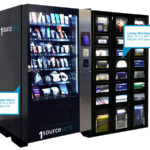In 2022, some distributors were well prepared, while others struggled to navigate the economy, supply chain constraints and inflation.
As we tend to do at the start of a new year, it’s time to take a closer look at your business. To fortify your business in the coming year, ask yourself the following five questions.
How Agile are You?
Agile businesses come out on top. Businesses that are quick to pivot and respond to ever-changing needs and roadblocks experience increased customer satisfaction, operational performance, employee engagement and efficiency, according to McKinsey.
It’s impossible to know when the next supply chain crisis will hit or what the next big customer trend will be, so to be prepared to weather any unexpected setbacks, your organization must be flexible and able to pivot quickly whenever needed.
To re-examine your current infrastructure, consider the following:
- Are my systems operating on a robust, flexible ERP?
- Do I have access to AI-generated forecasts and analytics that can anticipate supply chain issues and demand setbacks?
- Am I prepared to handle a cyber-attack?
How Secure is Your Data?
Every day cybercriminals find new ways to access company information. With the average cost of a data breach in the U.S. reaching $9.44 million in 2022, having the proper systems and procedures is essential. Yet, half of U.S. businesses still lack the proper cybersecurity needed to defend against potential attacks. To protect your data and systems, you must know where your vulnerabilities lie—and how to address them.
A few best practices to protect your business include:
- Enabling multi-factor authentication
- Securing sensitive/privileged credentials
- Using anti-malware and workload protection tools
- Isolating legacy systems
- Designing a training and response plan.
How Well Can You See into All Areas of your Business?
A lack of visibility into all areas of your business can lead to unexpected setbacks, stockouts and supply chain issues. In a recent QuickTake podcast, MDM’s Tom Gale and Indian River Consulting Group’s Mike Marks labeled “transparency” as critical for success in the new year. Distributors should have real-time insight into inventory, knowledge of what’s going on with all suppliers, and easy access to real-time data from various channels and departments in a unified dashboard.
The right tools aggregate data and enable you to analyze need-to-know data such as customer patterns, sales forecasts, supplier shipping schedules and inventory updates.
Your goal should be adopting technology that gives you greater financial visibility, improved supply chain resiliency, a better omnichannel experience for customers and increased operational efficiency.
Can You Increase Employee Productivity?
According to Gallup’s 2022 State of Global Workforce report, less than one-third of employees are engaged at work … and engagement directly relates to productivity. If employees feel their time is drained away doing unnecessary manual tasks rather than interacting with customers or improving the shopping journey, their engagement—and productivity—will suffer.
Within your own organization, employees might have to use several different tools to perform their job. Hopping back and forth between systems and applications is time-consuming.
Prioritizing streamlining workflow and automation in 2023 so your employees can get back to doing the big-picture work that makes them feel engaged and excited to be at your company.
How Can You Improve Customer Experience?
According to a recent McKinsey study, two-thirds of B2B customers prefer shopping via remote or digital self-serve channels. The same study also found that nearly 80% of B2B customers would actively look for another supplier if their expectations weren’t met.
To meet those rising expectations, distributors need to embrace omnichannel, the interconnectivity of systems, channels and departments. Distributors with omnichannel capabilities provide customers with a seamless shopping experience, no matter when or how they want to interact with them.
For instance, if a customer learns about a new product from a field sales rep, they could search for the product online, add it to their cart, and then send a purchase order to inside sales. In a traditional sales environment, switching between channels would be a headache for the customer because they would have to bring sales or customer service reps up to speed at every interaction. With omnichannel, customers can glide between channels as they shop, making it easier to do business with you.
Ultimately, ask yourself if your business gives customers, suppliers and employees the best experience possible. If the answer is no or “there’s room to improve” (and there almost always is!), it’s time to consider a fresh approach. Let 2023 be the year your company increases agility, security, visibility, employee productivity and the customer experience.
Related Posts
-
Our latest QuickTake podcast discusses how distributors’ roles go beyond reacting to threats and opportunities…
-
The API acts as a data exchange medium between a business' ERP systems and vending…
-
OneSource saw significant growth in each of its business segments in 2022.






